The way composite restorations are carried out is changing, thanks to injection overmoulding using Dr David Clark’s pioneering Bioclear Method. This approach renders a composite resin restoration, which is nearly as bulletproof as the new strong, monolithic all-ceramics.
The Bioclear Method is changing the way dentists think about restorative dentistry, helping us to wave goodbye to the damaging legacy of ‘amputation’ dentistry…

Bioclear in action
Patients with a peg, or undersized, lateral incisor are relatively common, and often display a diastema in the midline region caused by the distal movement of the central incisor. Yet one of the most damaging treatments dentists can give to a young maxillary incisor is to place a full-coverage crown. Carrying out this process two or three times results in the patient having almost no tooth left.
In this case study from Dr David Clark, founder of the Academy of Microscope Enhanced Dentistry, the patient chipped two teeth - incisal-third fractures of teeth Nos. 8 and 9. He visited Dr Clark, some 20 years after the maxillary central incisors had already been restored three times with ceramic crowns.
Up to 72% of the tooth is cut away when a conservative full-coverage ceramic crown is fitted, meaning each treatment had seen the patient’s teeth get smaller and smaller over time.
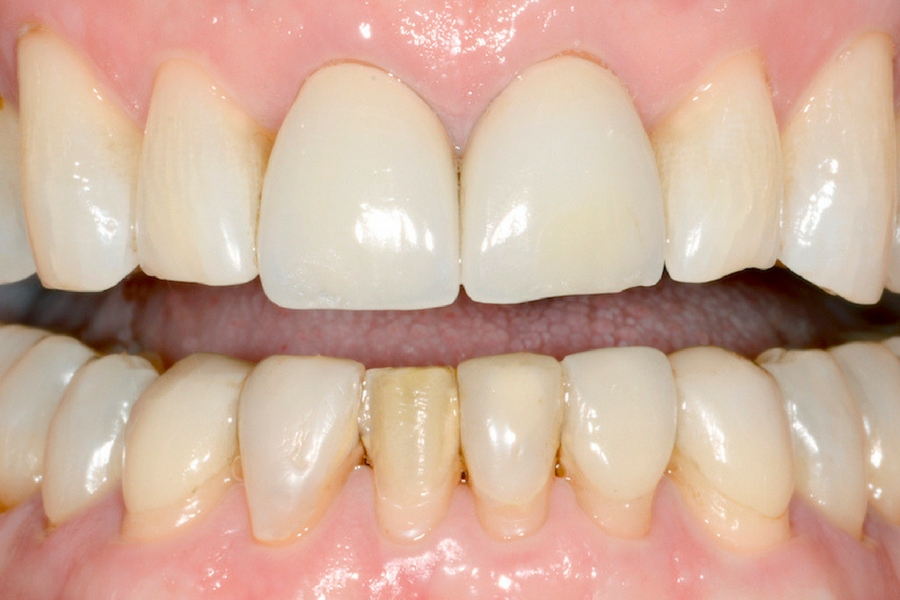
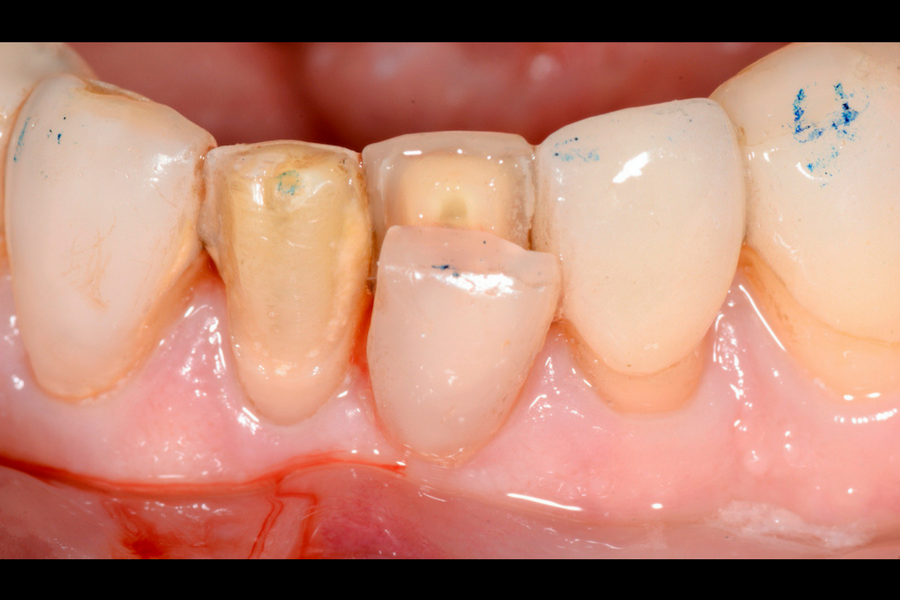
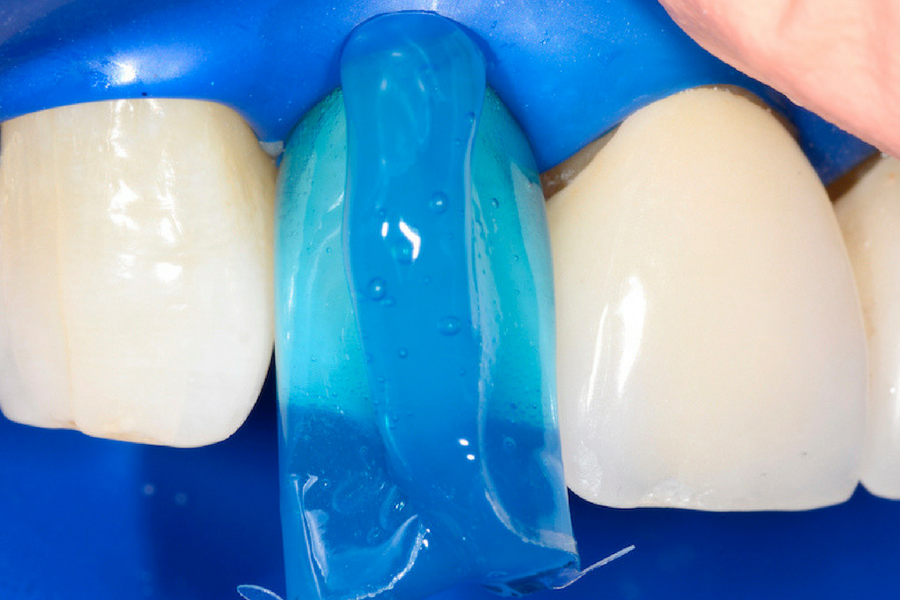
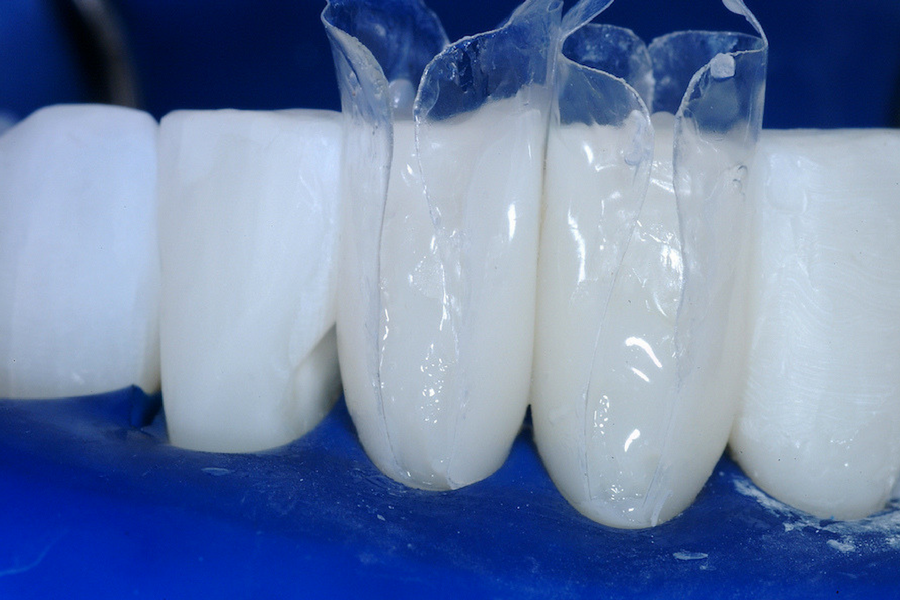
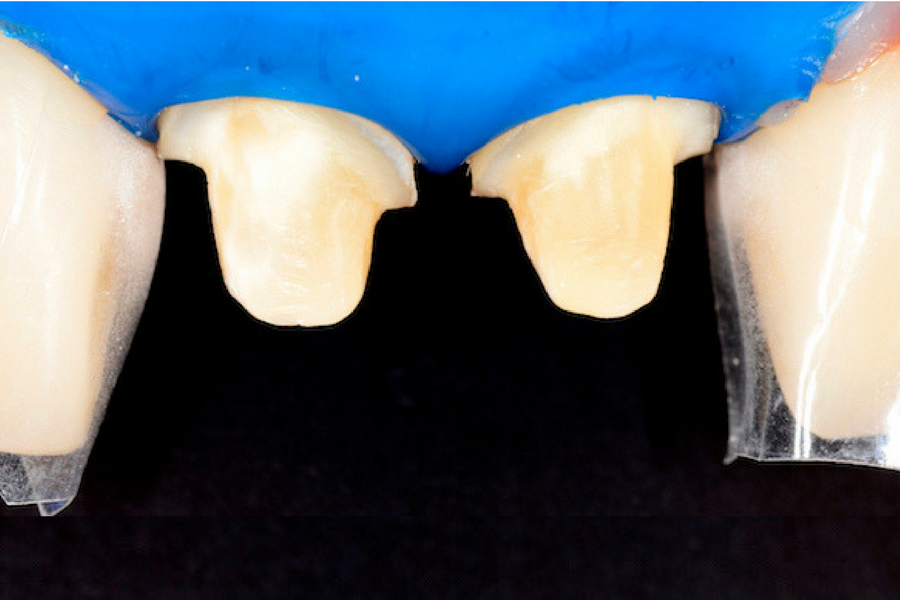
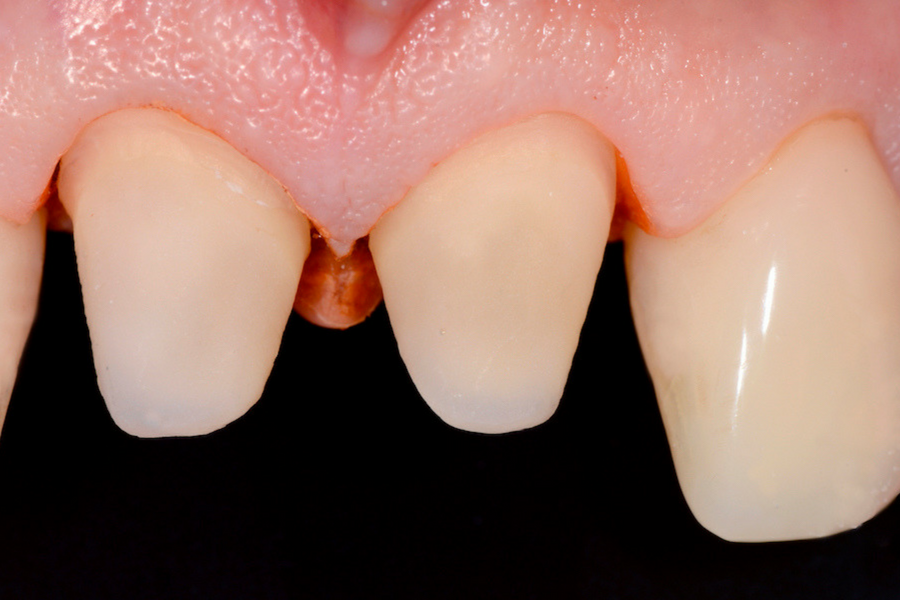

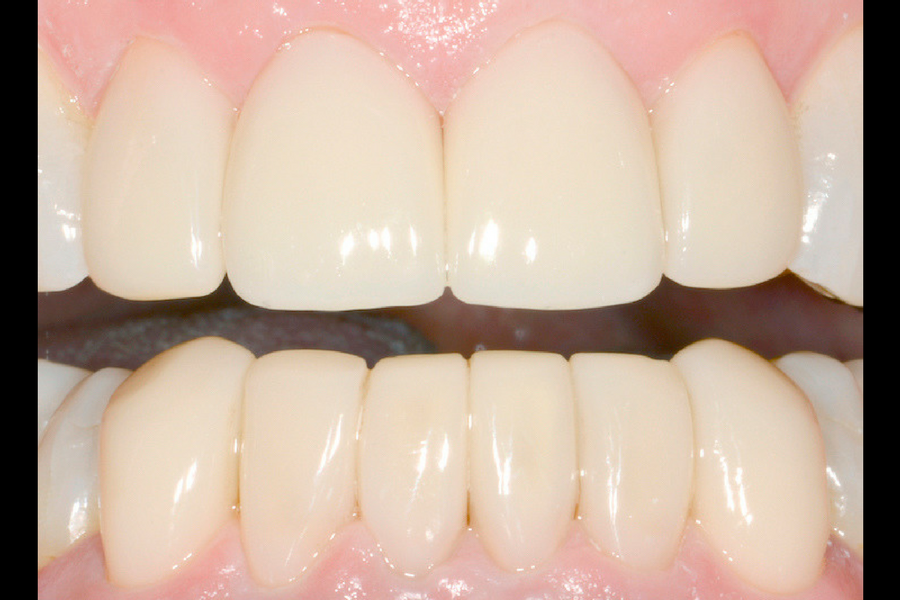
Needless destruction of enamel
All the treatments had been executed carefully by skilled and caring clinicians using state-of-the-art techniques. However, the eventual outcomes were not satisfactory.
Throughout the years, the crowns on the upper arch wore down the enamel on the lower incisors. They were subsequently ground down further by his dentist, to make clearance and draw to place porcelain veneers. These preps were mostly in dentin, and almost into the pulp.
So when the patient experienced yet another failed set of crowns, he approached Dr Clark with this dilemma.
Using composite overlays
Dr Clark's treatment involved opening the vertical dimension of occlusion (VDO) with a unique and straightforward technique that is taught in the level 3.2 course at the Bioclear Learning Centre. Dr Clark placed composite overlays on the blasted (with aluminium tri-hydroxide [Bioclear Blaster]), etched, and unprepared posterior teeth of the lower arch.

Injection overmoulding
Next, the patient’s maxillary lateral incisors were overmoulded with Bioclear 360° direct composite resin veneers using two A103 Small Incisor Matrices (Bioclear), one on the mesial and one on the distal.
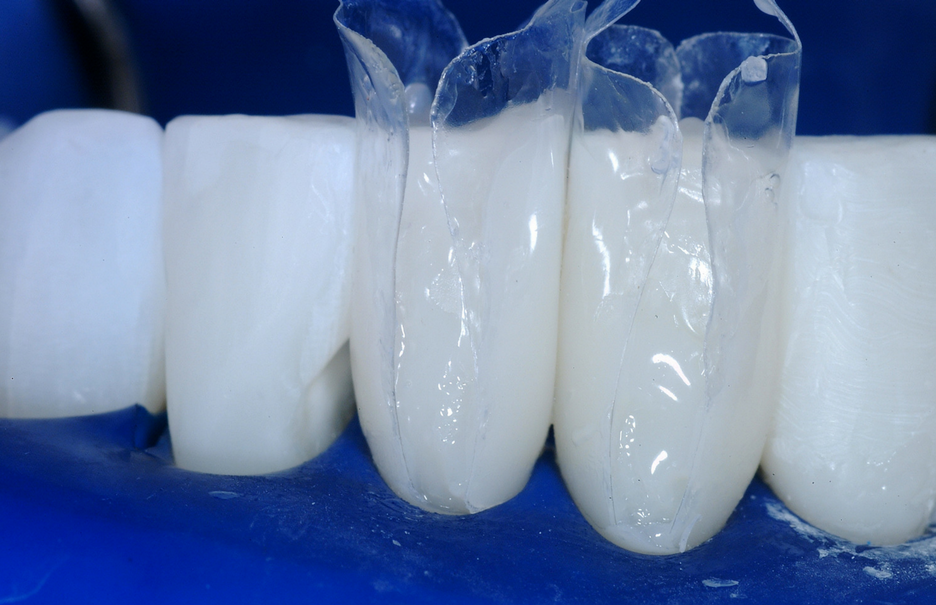
Once the Bioclear 360° composite veneers were finished on the lower incisors, the crowns were removed, and abutments strengthened and then impressed. Photos were taken to allow the ceramist to easily match the layering ceramic to the composite.
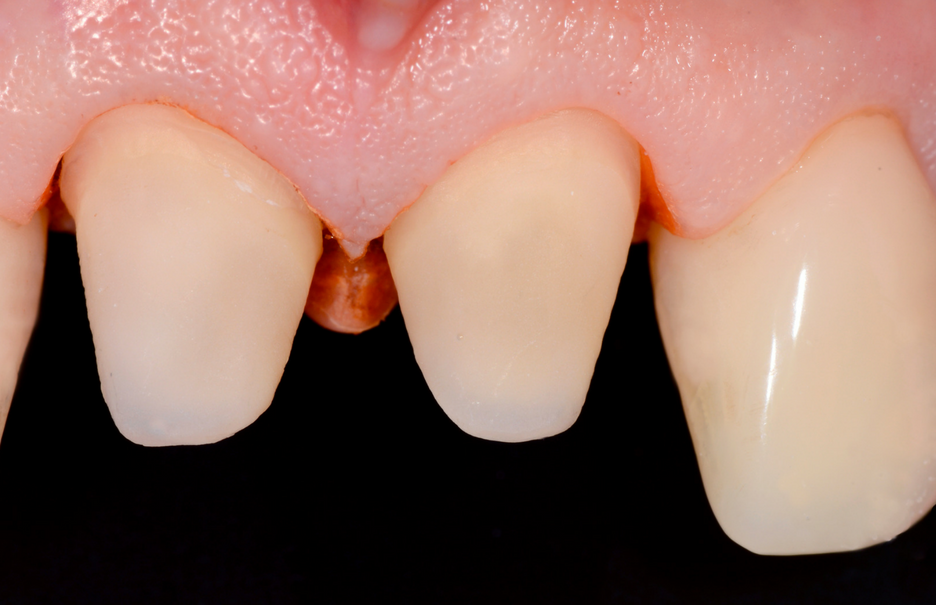
Replacement of the crumbling, and mostly de-bonded, lower veneers was carried out in the same manner - with Bioclear 360° overmoulded composite veneers. The VDO had been opened, so Dr Clark didn’t have to grind yet another 2mm off the patient’s already severely reduced lower incisors.
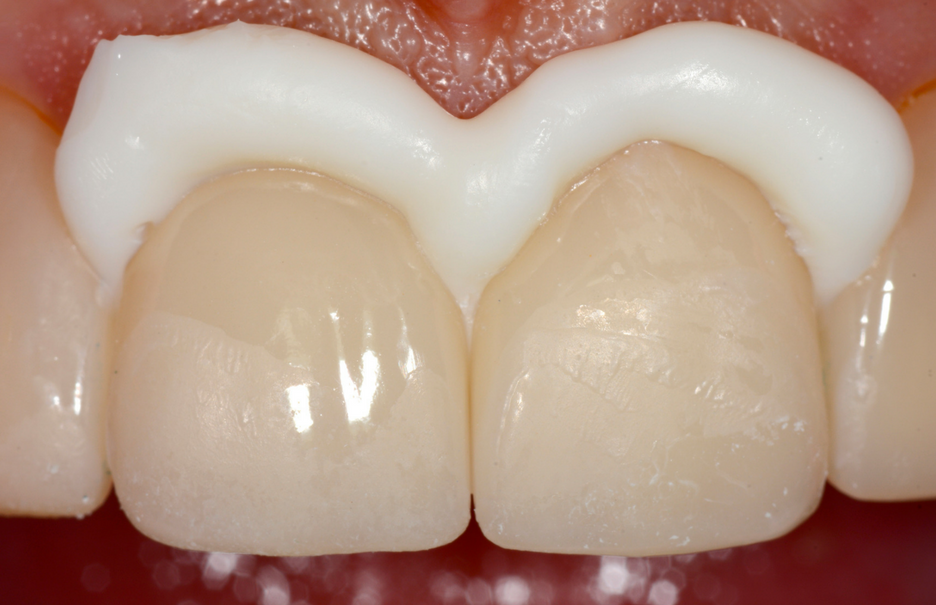
Bioclear rises to the challenge
The lower teeth lacked natural contacts once the veneers were removed, causing the treatment of the lower arch with composite overmoulding to be significantly more challenging than the maxillary lateral incisors.
As the patient was distraught about the loss of tooth structure, resulting from the dentist’s decision to grind his front teeth down decades before, he was insistent on doing the least invasive approach. He also wanted to avoid additional ceramic restorations.
The resulting challenge of managing Bioclear Matrices without the aid of natural contacts was met, albeit with logistical complexities…
In the final postoperative view, you can see the match between the maxillary central incisors restored with pressed lithium disilicate crowns (Shade A-2) (IPS e.max [Ivoclar Vivadent]), cemented with a resin modified glass ionomer cement [RelyX Luting Plus [3M]), and overmoulded composite on teeth Nos. 7, 10, and 22 to 27.
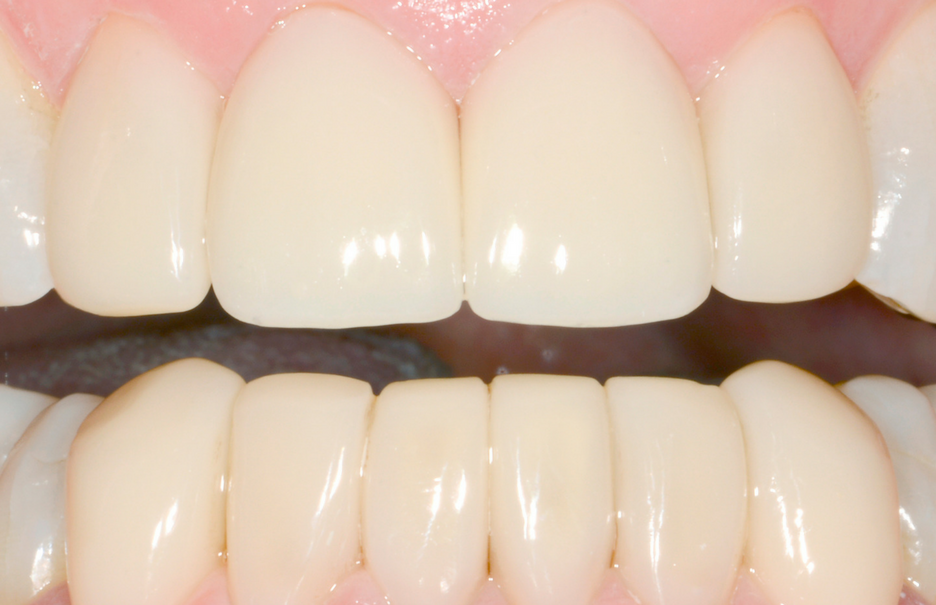
Monolithic composite resin (Filtek Supreme Ultra [3M]; A-2 body shade) was used with 90% of the volume in regular (paste) composite and approximately 10% Filtek Flowable (3M).
A properly warmed (HeatSync [Bioclear]) composite resin will flow into the nooks and crannies and gingival margin areas where the angle of the matrix-tooth interface is too acute to inject room temperature paste composite.
Rethinking restorative dentistry
Traditional dentistry would have seen the patient’s tiny lower incisors further ground down to make clearance and draw to receive all-ceramic crowns, a procedure which would have risked losing all of the lower incisors. Bioclear offered another solution.
Dentists need to embrace change and look at restorative dentistry from a new perspective. Today, a patient with a fractured incisor should receive minimally invasive injection overmoulding using a composite resin - not a full-coverage ceramic crown.
Our free guide addresses the problem of unnecessarily aggressive restorative treatments, presenting a range of conservative solutions for treating black triangles, Class II restorations and peg laterals, as well as closing diastemas.

*This case was originally presented by Dr David Clark in Minimally Invasive Dentistry.
